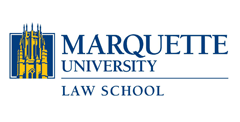Abstract
Patent eligible subject matter is defined by the legislature’s 35 U.S.C. § 101 to include “any new and useful process, machine, manufacture or composition of matter.” Since the nineteenth century, however, United States (U.S.) courts have considered certain otherwise eligible subject matter excludable from patent protection. The judiciary’s doctrinal exclusions’ purpose was to protect fundamental building blocks to science and useful arts ensuring that such information could not be monopolized by one entity. Presently, however, the judicial exclusions have been used to exclude fewer fundamental building blocks and more ordinary brick-and-mortar innovations after two U.S. supreme court decisions (Mayo and Alice). The doctrinal exclusions have been recently interpreted so loosely that many practitioners are turning their heads away from § 101 jurisprudence in fear of the erratic and inconsistent wreckage of § 101 judgments. This article discusses the history of § 101 and its doctrinal exclusions to regain a collective consciousness as to its original directives. This article parses through recent appellate decisions and illustrates common arguable derailments made by the judiciary in weighing inventions under the Mayo-Alice framework. Finally, this article includes practical suggestions for all three branches on the U.S. government on § 101, including use of a pictorial tool in analyzing claim scope under the preemption doctrine to take the “abstractness” out of the analysis. By pie charting claims against all possible practical applications of a fundamental concept those applications foreclosed by the claims become more distinct, as should eligibility therefrom.
Repository Citation
Kristy J. Downing,
Patent Eligibility's Doctrinal Exclusions... Lately, a Scary Movie Too Difficult to Watch: Concrete Solutions and Suggestions,
22 Marq. Intellectual Property L. Rev. 231
(2018).
Available at: https://scholarship.law.marquette.edu/iplr/vol22/iss2/6
Included in
Intellectual Property Law Commons, Jurisprudence Commons, Litigation Commons, Science and Technology Law Commons
